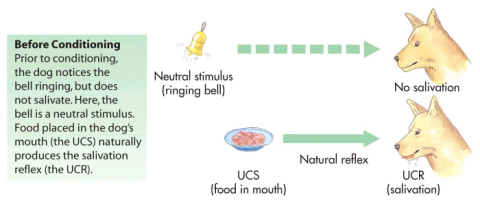
For psychologist, the application is in further research into Classical Conditioning in humans. The applications of this study are diverse. This gives the research inter-rater reliability and test-retest reliability. He even got different researchers to observe the dog and measure the saliva. In fact, Pavlov did repeat the study many times over 25 years, with different dogs and different Neutral Stimuli ( but never with a bell!). This is a good example of a reliable study because it has standardised procedures and it was carefully documented. The dog was strapped into a harness to stop it moving about and its mouth was linked to a tube that drained saliva away into a measuring bottle. This was to prevent other stimuli ( extraneous variables) from making the dog salivate. Pavlov placed each dog in a sealed room that didn't allow the dog to see, smell or hear anything outside. Pavlov's careful set-up enabled him to count how many drops of saliva the dogs produced.ģ5 dogs of a variety of breeds, raised in kennels in the lab Other condition of the IV is the dogs' behaviour after they have been conditioned to associate food with a different stimulus. One condition of the IV is the dogs' natural reflexive behaviour: salivating when food is in their mouths. This is a Repeated Measures design, since it studies the same dogs before and after their conditioning In particular, to see if associating a reflex with a neutral stimulus (a sound) causes learning to take place, producing a conditioned reflex in new situations. To find out if a reflexive behaviour can be produced in new situations through learning. This was the "learning" Pavlov was interested in, but to study it, he had to keep the dogs in a sealed environment where he could carefully control the stimuli they were exposed to.ĭon't become a mere recorder of facts, but try to penetrate the mystery of their origin - Ivan Pavlov After being fed by lab assistants, the dogs started to salivate at the mere sight of a lab assistant, or the sound of their footsteps. However, his research was disrupted by the tendency of the dogs to start salivating before the food was presented to them. Pavlov even used surgery to attach test tubes to dogs' mouths so that the saliva could be collected and measured accurately. He chose the salivary reflex because it is an easy reflex to measure: you can gather drops of saliva to see how strong the reflex is. He chose dogs because they are "higher animals" who have reasonably complex brains and behaviours, but at the same time they can be housed and managed easily. Pavlov's original research was on the salivary reflex in dogs. Learning, for Pavlov, is how animals apply their reflexes to new problems and situations.

Reflexes alone won't help them do this, which is why Pavlov is interested in learning. In the wild, animals have to find food and avoid predators. However, reflexes alone don't explain how animals survive and evolve. For example, dogs have a salivary reflex: they slobber because this helps them separate good food from bad. Reflexes are involuntary behaviours that are passed on down the species because they have " survival value". Pavlov is particularly interested in animal behaviour called " reflexes".

If this is true, then you would expect the rules of animal behaviour to apply to humans too. If, as Charles Darwin proposes, humans and animals have common ancestors, then humans are really a particular type of animal. He justifies this by appealing to the Theory of Evolution. Pavlov is interested in the human brain but did his research on dogs. However, Pavlov spends time justifying and evaluating his research and it is worth noting some of the points he raises. Students don't need to know everything Pavlov discussed in his lectures the study on dogs is what matters.
#Pavlov experiment series#
This research is actually a series of lectures by the Nobel Prize-winning Russian scientist Ivan Pavlov.


 0 kommentar(er)
0 kommentar(er)
